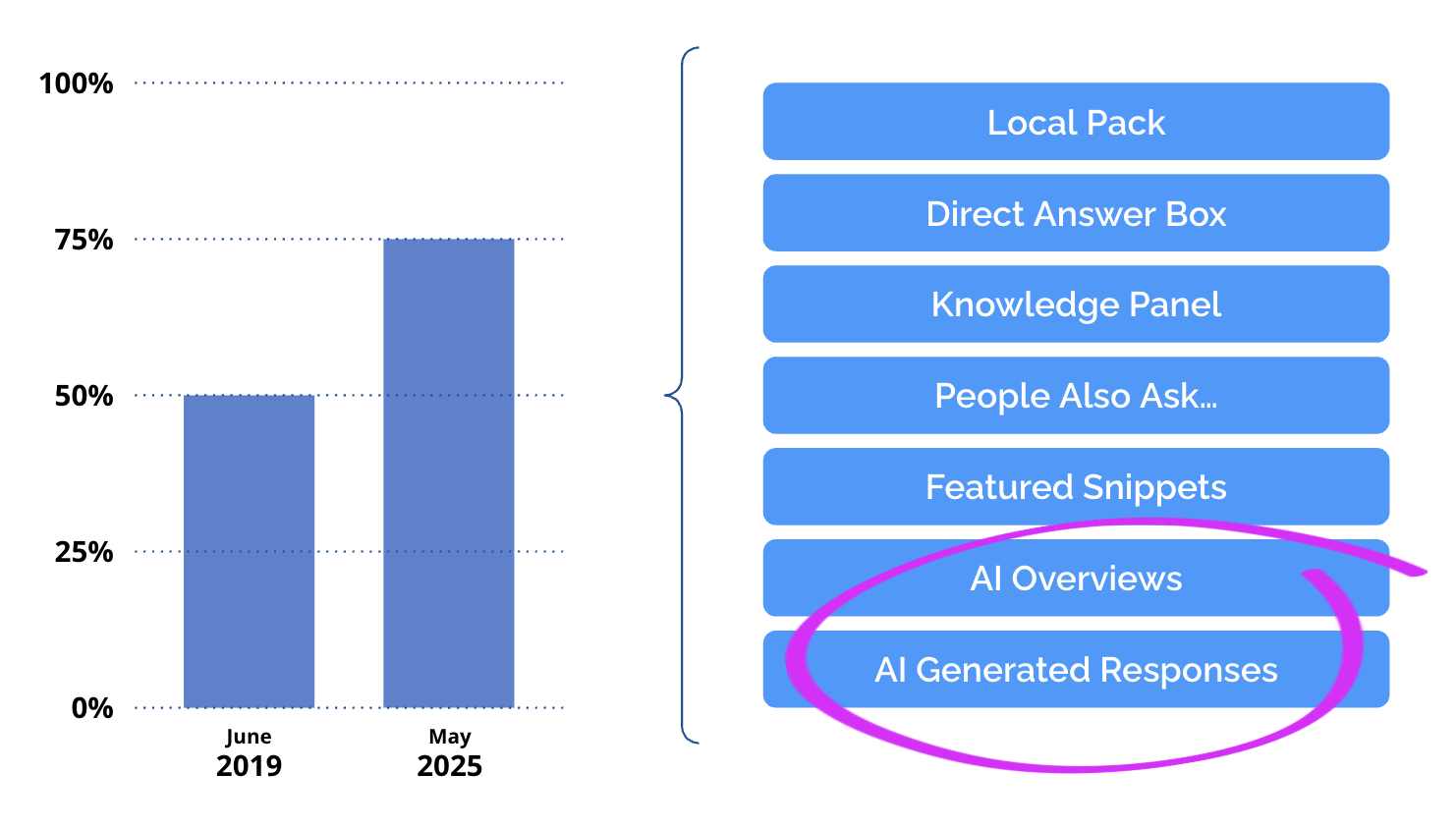The End of Classic Web Browsing & The Rise of Zero-Click Search
Navigating the new era of user experience
For decades, our digital lives have been defined by explicit commands. Whether typing lines of code into a terminal or clicking through a graphical user interface (GUI), human-computer interaction (HCI) has largely been a dance of direct instructions. This paradigm, which began with the foundational "batch processing" of the 1950s and 60s (think punch cards and delayed results), truly solidified with "command-based interaction" from the 1960s to the 2020s. Despite monumental leaps in processing power and application complexity, the core way we told computers what to do remained remarkably consistent.
But that era is swiftly drawing to a close. As renowned UX visionary Jakob Nielsen points out, we are now entering a new age of HCI: intent-based outcome specification [source]. In this paradigm, users no longer need to meticulously direct computers with clicks and commands. Instead, we simply articulate our desired outcomes, and sophisticated AI systems, armed with advanced reasoning capabilities and vast datasets, work autonomously to deliver those results. This isn't a futuristic fantasy; it's already profoundly reshaping user behaviours and expectations.
Advancements in AI computing have introduced the first new UI paradigm in 60 years
Zero-click search: the quiet end of classic web browsing
The types & percentage of zero-click search
One of the most profound manifestations of this shift is the escalation of zero-click search. AI-generated responses are now providing comprehensive answers directly within the search interface, often eliminating the need for users to ever click through to a website. Figures show that as much as 75% of search queries are now being answered without the user ever leaving the search engine [source]. This is a colossal increase from about 50% in 2019 [source], driven primarily by the proliferation of AI summaries and generative AI answers. This adaptation is far from over, as search engines like Google increasingly adopt "AI mode" as a default interface, the expectation is that zero-click behaviour will intensify.
For businesses, this trend marks a critical juncture. The traditional objective of Search Engine Optimization (SEO) — driving website traffic through keyword ranking and backlinks — is becoming an insufficient standalone strategy. If users are getting their answers directly from the search engine, the classic web browsing journey, where discovery invariably led to a website visit, is rapidly diminishing.
Embracing the new frontier of AI search
The imperative now lies in Generative Engine Optimization (GEO), often referred to more broadly as AI search optimization or AI SEO. This isn't about replacing traditional SEO, but expanding upon it to ensure your brand's information is the source material for AI-generated answers.
The team at Vendasta has been busy breaking down what GEO actually means, why it matters, and how it’s flipping traditional SEO on its head:
Here's what businesses must prioritize to thrive in this new landscape:
Prioritize high-quality, structured & authoritative content:
Accuracy & trustworthiness: AI systems heavily weigh the accuracy and reliability of information. Ensure your brand's data is impeccable, up-to-date, and demonstrates strong E-E-A-T (Experience, Expertise, Authoritativeness, and Trustworthiness).
Structured data & schema markup: This is non-negotiable. Implement schema markup and maintain clear site architecture. This helps AI systems parse, understand, and categorize your content, making it easily consumable for their models.
AI-focused content generation: Shift your content strategy from writing solely for human readers on an isolated webpage to creating content optimized for summarization and extraction by AI algorithms. Think conversational, Q&A formats, and content that directly answers specific user intents.
Concise & summarizable: Break down information into easily digestible chunks with clear headings, subheadings, bullet points, and short paragraphs. AI thrives on well-organized, extractable information.
Unique value: While AI summarizes, it doesn't create novel insights. Focus on producing unique, non-commodity content that offers perspectives AI cannot simply synthesize. This can still drive deeper engagement when users seek more than a quick answer.
Holistic digital presence & brand authority:
Beyond your website: AI pulls information from a vast array of sources: social media, forums, news articles, reviews. Your brand's consistent and accurate representation across all these touch points is crucial.
Link building & mentions (reimagined): While traditional “page rank” might evolve, a strong backlink profile and frequent, positive mentions on reputable external sites still signal authority and trustworthiness to AI models.
Evolving KPIs & the conversion hub:
As search engines like Google increasingly adopt "AI mode" as a default, zero-click behaviour will intensify. Consequently, traditional KPIs like website traffic growth, while still relevant, become less central to overall success.
Instead, metrics such as lead capture and conversion rates will assume greater importance. The website's role transitions from being the primary information repository to a refined conversion hub. The awareness, discovery, and initial research phases are increasingly completed by AI; your website becomes the destination for deeper engagement and transactional outcomes.
Continuous adaptation:
The AI landscape is dynamic. Regularly analyze how your content is being surfaced by AI, experiment with different content formats, and stay abreast of the latest AI search updates from major platforms.
Key takeaways for businesses
The shift to an AI-driven HCI paradigm is here, fundamentally altering how users find information. For businesses, this means:
Focus on generative engine optimization (GEO): prioritize providing accurate, structured, and easily digestible information that AI can use to generate direct answers.
Build content for AI & humans: create high-quality, authoritative content designed for summarization and extraction by AI, but still valuable enough for human readers seeking deeper insights.
Holistic brand management: ensure consistent and accurate brand information across all online digital touch points, not just your website.
Re-evaluate strategic KPIs: shift focus from mere website traffic to conversion metrics, recognizing your website's new role as a conversion hub.
Embrace the change: The future of search is AI-driven. Adapting your digital strategy now is essential for continued visibility and success.


